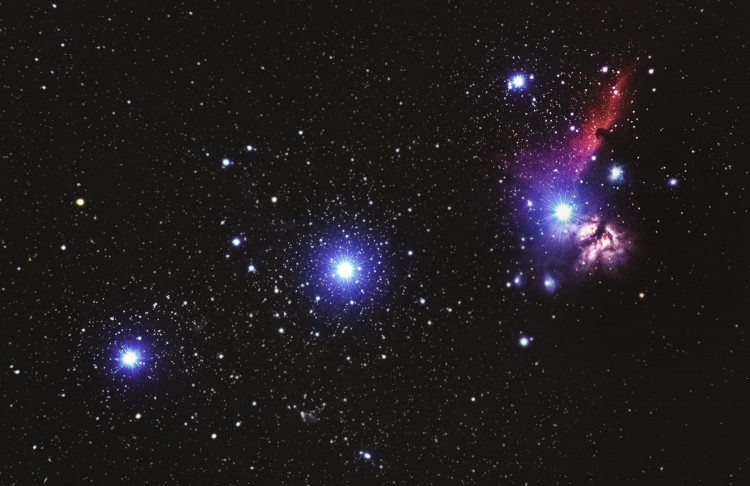A system called GW Orionis that sits about 1,300 light-years from Earth is one of the rarest finds in the universe, as it is a triple star solar system. Its two suns orbit each other at the center, and a third star is circling around its siblings from a hundred million miles away.
Scientists previously identified the system as a huge orange bullseye in the sky by its three bright rings of planet-forming dust. Now, a closer research suggests that the rings may contain more than just dust; according to two recent studies published today in Sept. 3 in the journal Science and May 21 in The Astrophysical Journal Letters, there may be a new planet, or the creation of one, forming inside the rings and throwing off the gravitational equilibrium of the entire system.
The existence of such a planet would not only help to explain why the inner ring of the system appears to wobble violently around like a broken gyroscope - but, if true, the distant planet would also become the first known example of a single planet orbiting three suns at once, the scientists said.
"Our simulations show that the gravitational pull from the triple stars alone cannot explain the observed large misalignment [in the rings]," Nienke van der Marel, co-author of the May 21 study, said in a statement. "We think that the presence of a planet ... has likely carved a dust gap and broken the disk [where the inner and outer rings meet]."
Most of the universe's solar systems are made up of binary pairs - two stars that orbit one another around a common center of gravity. Triple-star systems, like GW Orionis, are much less common, as the cumulative gravitational pull of three suns can be difficult to reconcile; if the mass of the third star and the distance from the other pair is not just right, that star can easily get kicked out of the system and into interstellar space.
And the combined gravity of three aligned stars may have odd results. Every planet sits within a single disk of gas and dust in our solar system, and each orbit in a relatively flat plane aligned with our sun. In GW Ori, three separate rings of dust orbit around the middle of the solar system, and none of them are associated with the three stars' orbit. Added to that, the innermost ring of the system is entirely misaligned with the two larger, outer rings, diagonally jutting out of the plane like a sinking ship.
The second team of astronomers investigated Ori's misaligned rings in the latest Science report, this time using the Very Large Telescope (VLT) and the ALMA. The findings reveal the shadow of the inner ring of the system covered in the outer ring that allowed the scientists to measure the precise form and size of the small ring. Over the past 11 years, the team has plotted the three-star orbits of the planet, spanning an entire region.
Together, the two studies demonstrate how the wonky motions of the stars of GW Ori may have skewed the dusty disk of the solar system through a phenomenon called the "disk-tearing effect," in which the gravitational force of multiple stars causes the disk to break into distinctly different rings. This is the first time a misaligned disk has been conclusively associated with the impact - but, the researchers noted, the star pull alone does not fully explain the peculiar behavior of the system.
The missing piece of the puzzle could be an undiscovered planet, hidden right at the breaking point between the disk's inner and outer rings, according to the research team.






